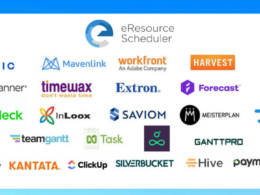Table of Contents
We review all suggested products and services on our own. If you click on the links we share, we might get paid. Find out more.
Opening a robo-advisor investment account is as simple as opening an online bank account. Most robo-advisory accounts are set up online, but if you choose platforms like Fidelity or Schwab with physical offices, you can also open the account in person.
Before you start your account, it’s a good idea to check reviews and look at the websites of different digital investment advisors to find the one that matches your financial goals. Once you’ve chosen a robo-advisor, make an account and answer some questions about your goals, age, timeline, and how much risk you’re comfortable with. This helps ensure the mix of investments or portfolios is right for you. We’ll look into all the details, including comparing robo-advisors, their features, minimum requirements, performance, and the returns they offer.
Steps Needed to Open a Robo-Advisor Account
Step 1: Decide If Opening a Robo-Advisor Account Is Right for You
If you want to make managing your money easier, consider opening a robo-advisor account. A robo-advisor is an online investment manager that uses digital technology. However, there are many types of robo-advisors. For example, SoFi offers a digital investment manager with no fees, and you can also get help from financial advisors. On the other hand, Wealthfront combines digital investment management with access to many different ETFs for customization.
Robo-advisors charge different fees, starting from zero at platforms like M1 Finance and Schwab Intelligent Portfolios and going up to 0.50% or more of the assets they manage. However, most people looking for affordable investment management can find a robo-advisor that suits their financial goals, investment preferences, and budget.
Registering for a robo-advisor is easy, like creating an online investment account, which we’ll discuss next. Your account’s security is as strong as that of any other online financial institution. Whether you want access to financial advisors, tax-loss harvesting, or active or passive investment management, there’s a robo-advisor out there for most investors.
Step 2: Choose Where to Open a Robo-Advisor Account
Choosing the right robo-advisor among many options can be tough. To pick the best platform, figure out what you want from an investment manager. Think about features, types of accounts, how much money you have, and the price of the robo-advisor.
Before you start a robo-advisor account, ask yourself these questions:
- How much money are you planning to invest?
- Do you want to talk to a human financial advisor?
- How much do management fees matter to you?
- Do you care about tax-loss harvesting?
- What kind of account are you looking for?
- Do you prefer a robo-advisor from a big financial company?
- Are you interested in personalizing your investment options?
Robo-advisor accounts come in various types, including individual investment accounts, trusts, custodial accounts, and even 529 accounts at Wealthfront for college savings. Some robo-advisors also offer SEP and SIMPLE IRAs for small business owners as well as traditional and Roth IRAs. You can open a robo-advisor account at major financial firms like Fidelity, Interactive Brokers, Merrill, and JP Morgan, as well as standalone platforms like Ellevest, M1 Finance, SigFig, Betterment, and Wealthfront.
Once you’ve figured out the features, minimum investment, pricing, and account types that suit your needs, read robo-advisor reviews to find the best match.
Best Robo-Advisor Accounts
| Company | Account Minimum | Fees | Key Features |
|---|---|---|---|
| Wealthfront Best Overall / Best for Goal Planning / Best for Portfolio Management / Best for Portfolio Construction | $500 | The annual fee is 0.25% for investing plan accounts with a minimum balance of $20,000 or monthly deposits of at least $250. Otherwise, a flat monthly fee of $4 applies if you don’t meet these requirements. | Sophisticated financial planning, customized portfolios, up to $1 million FDIC insurance, mobile app on par with desktop version |
| Betterment Best for Beginners / Best for Cash Management | $0, $10 to start investing | With a user-friendly interface, excellent goal-planning tools, and calculators, the Preferred Rewards program assists in fee reduction, portfolios managed by financial experts, and top-notch customer service. | Strong cash management tools, customizable asset allocation, ability to set multiple goals, test different scenarios for goals, and link external accounts. |
| M1 Finance Best for Low Costs / Best for Sophisticated Investors / Best for SRI | $100 ($500 minimum for retirement accounts) | 0% | Affordable, personalized investment portfolios; extensive selection of pre-made portfolios; borrowing and spending options available. |
| Merrill Guided Investing Best for Education | $1,000 | The fee is 0.45% of the assets under management. If you opt for an advisor, the fee is 0.85%. Discounts are offered for participants in Bank of America Preferred Rewards. | With a user-friendly interface, excellent goal-planning tools, and calculators, the Preferred Rewards program assists in fee reduction, portfolios managed by financial experts, and top-notch customer service. |
| E*TRADE Best for Mobile | $500 | 0.30% | With a user-friendly interface, excellent goal-planning tools, and calculators, the Preferred Rewards program assists in fee reduction, portfolios managed by financial experts, and top-notch customer service. |
Step 3: Start the Application Process
To open a robo-advisor account online, you’ll need to provide some basic information about yourself and your finances, similar to what you’d do when opening a bank account. Fill out an application form with details like your name, address, and financial information. Then, select the type of account you want, like an individual or joint investment account, IRA, or trust. Before you begin, check the robo-advisor’s FAQ section to see what kinds of accounts they offer.
Steps to Open a Robo-Advisor Account
Robo-advisor apps each have their requirements, but they usually ask for specific documents to verify your identity. This is to make sure you’re you. In the U.S., most robo-advisors need users to be citizens or permanent residents to open and invest in an account.
Information about you that you’ll need to provide:
- You’ll need to give your name, address, phone number, and email address.
- You must also provide your driver’s license or state ID card.
- You’ll be asked for your Social Security number, too.
- You’ll also need to share details about your money, like your worth and earnings.
- They might also ask about how much you know about investing.
Banking Information
When you set up your robo-advisor account, you’ll usually transfer money from your regular bank account. This bank info is also needed to take money out of your robo account. To connect your robo account with your bank, you’ll need to give details about your bank, like its name and account number.
- Name of your bank
- Type of account
- Bank routing code
Step 4: Complete the Questionnaire
The main thing in many robo-advisors is the first set of questions you answer. These questions help decide how your investments will be handled. Most apps will ask for simple details like your name, birthday, income, and what money you already have. They also ask about your investing goals and the type of account you prefer.
The part of the “risk tolerance” questions is about figuring out how okay you are with your investments going up and down. In robo-advisors, risk means how likely your investments are to change in value, especially going down. If you’re okay with bigger drops in your investment’s value, or if you’re young and have time to recover from losses, you’ll get a portfolio that’s more focused on making bigger gains, even if it means bigger drops sometimes. This portfolio will have more money in stocks and less in safer investments like bonds or cash. But if you’re older or not comfortable with big drops in value, your portfolio will have more in safer investments like bonds and cash and less in stocks.
Stocks are considered more risky because their prices can change and decrease dramatically in a year, while bond funds usually stay within a smaller range. People expect to make more money from stocks because they can also lose money. So, if you invest for a long time, you might get more money back from a portfolio with many stocks.
After you answer the questions about risk, you’ll see a sample of how your investments might be split based on your answers. Luckily, you can change your portfolio if you don’t like how it’s set up. For instance, if you’re older and have experience, you might want to invest more in stocks even if the platform suggests less. And if you’re newer to investing, you might want to play it safer, even if the platform suggests more stocks.
To understand more about how a robo-advisor picks investments for you, you can try Merrill Guided Investing. You can see the questions it asks and what investments it might choose for you without actually opening an account or putting money in.
Step 5: Fund Your Account
Once ready, you must add money to your account and start investing. You’ll connect your bank account to transfer funds. Robo-advisors suggest setting up automatic transfers from your bank to the robo-advisor. This helps them manage more of your money, but it’s also good for you because you invest regularly, even when the market goes up and down. This way, you can buy more shares when prices are lower, called dollar-cost averaging.
You can also add money to your account by doing a one-time transfer from your bank, sending a wire transfer, or mailing a check to the firm. If there are offices nearby, you might be able to drop off a check in person. The sooner you start investing regularly, the more time your money has to grow in the financial markets.
Factors to Consider When Opening a Robo-Advisor Account
Minimum Investment Requirement
Unlike a regular bank account, which usually doesn’t ask for a minimum amount, some robo-advisors need you to invest a certain amount to use their service. This amount can vary depending on the platform and what they offer. Some robo-advisors like Betterment, M1 Finance, and SoFi Automated Investing let you start investing with just $10, while others like Wealthfront need at least $500, and Schwab Intelligent Portfolios require $5,000. Robo-advisors that give you access to financial advisors usually ask for more money as a minimum compared to other digital platforms.
Account Fees
Many robo-advisors ask for a management fee, a percentage of the value of your investments or what they manage for you. Typically, this fee is between 0.25% and 0.50%. However, platforms like Schwab Intelligent Portfolios, M1 Finance, and SoFi Automated Investing don’t charge a management fee for their basic digital service.
For more features, platforms like Ellevest and Schwab Intelligent Portfolios Premium might charge a monthly fee, no matter how much you have in your account. Apart from Fidelity Go, which offers fee-free mutual funds, other robo-advisors charge small fees for the funds they invest, usually ranging from 0.03% to 0.90% of what they manage for you.
Past Robo-Advisor Performance
The performance of a robo-advisor depends on a few things, like when you invested, which funds were picked, and when the performance was measured. Returns from robo-advisors can vary because they’re based on your specific situation. Different types of funds do better in different times. Some robo-advisors show how certain portfolios performed at specific times, but that doesn’t mean you’ll get the same return.
Luckily, most robo-advisor portfolios use low-fee index funds that cover a variety of assets. Research has found that index funds usually do better than funds actively managed by people. So, we suggest not picking a robo-advisor because of its past performance.
Investment Options
Different robo-advisors offer different investment choices. Most have low-cost funds that cover popular stocks and bonds. Some, like Wealthfront, give extra funds to diversify your investments. A few robo-advisors have unique strategies, like smart beta or actively managed approaches. Each platform offers portfolios with different mixes of stocks and bonds to match different types of investors, from cautious to bold. Before putting money in, check the investment options to suit your needs.
Option to Speak to a Licensed Advisor
Most customer service reps at robo-advisor firms have basic securities licenses. Some robo-advisors offer a mix of digital investing and human advice, usually giving you unlimited access to trained financial planners.
Some platforms have a fully digital option at one price and a hybrid option at a higher cost, with a higher minimum investment. For example, Vanguard Digital Advisor charges a 0.20% fee and needs a $3,000 minimum investment. Their Personal Advisor option gives you access to a financial advisor but requires a $50,000 minimum investment and charges a 0.35% fee. Betterment and Ellevest offer low-fee financial planning meetings. SigFig and SoFi, Automated Investing clients, can talk to a financial advisor. Fidelity Go clients with over $25,000 can chat with a financial coach.
FAQs
1. How Risky Are Robo-Advisors?
Ans: Investing always involves some risk because the value of investments can increase. Over time, stocks and bonds have generally made money, but what happened in the past doesn’t guarantee future success. Robo-advisor portfolios invest in financial markets, so they face the same risks. All the robo-advisor companies we talk about have SIPC insurance, which protects your money up to certain limits in case the company goes under or acts improperly. You can easily check the SIPC website to ensure your robo-advisor is covered.
2. Are Robo-Advisors Good for Beginners?
Ans: Robo-advisors are great for new investors for a few reasons. They often have low minimum requirements, so even people with little money can start investing and create a diverse portfolio that they can add to over time. The low fees appeal to beginners because most of their money goes into the markets, not fees. With many robo-advisors to choose from, beginners have lots of options for how they want to invest.
3. Do Robo-Advisors Beat the Market?
Ans: Many robo-advisors follow modern portfolio theory (MPT) and invest their clients’ money in index funds that match the market. However, there’s more to this question than meets the eye.
Most robo-advisors put some of their money into an ETF that follows a big index like the S&P 500. This part of your investment will probably do about as well as that index. Other parts of your investment, like bond funds and different types of stock funds, follow other market indexes. These funds will likely do about as well as those indexes, which might not be the same as the S&P 500 or the “market index.” But remember, doing better than the market isn’t the only important thing. It’s crucial to understand the risks and goals of your investments and what you want from a robo-advisor to reach your long-term financial goals.










